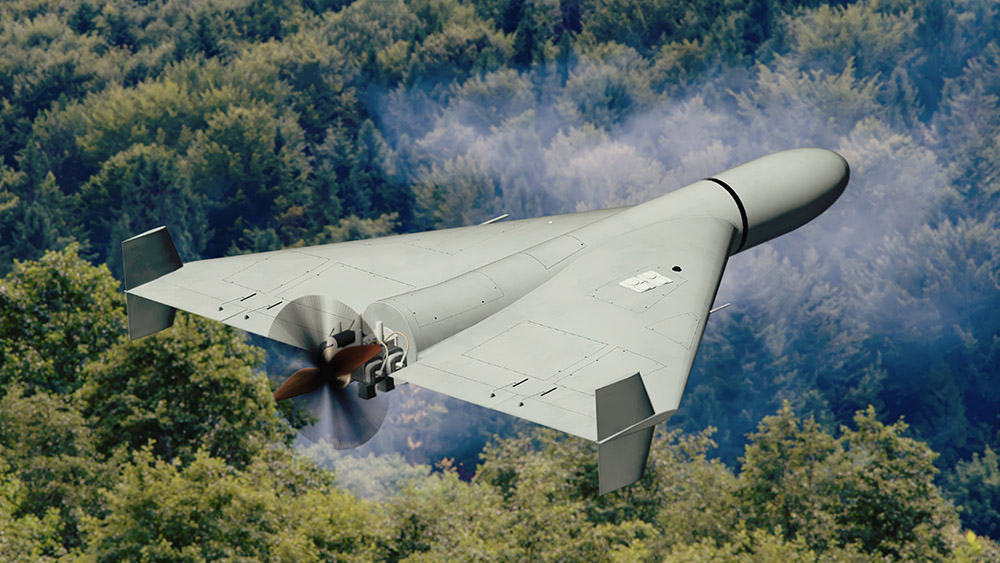 Parler
Parler Gab
Gab
- The Sea-Based X-Band Radar (SBX-1), a key U.S. missile defense asset, has been relocated within Hawaii.
- Its recent, conspicuous movement to an undisclosed Hawaiian location sparked public curiosity and discussion online.
- The SBX-1 is a massive, mobile radar system designed to track and discriminate incoming ballistic missile threats.
- The system provides critical data to interceptors, enabling them to destroy hostile warheads in mid-flight.
- This redeployment is part of a broader, evolving strategy to counter advanced missile threats from adversaries.
An engineering marvel for a modern threat
The Sea-Based X-Band Radar is a cornerstone of the United States' Ground-based Midcourse Defense system. Far from being a mysterious object, the SBX-1 is a feat of military engineering. It is the world's largest and most powerful X-band radar mounted on a mobile, ocean-going platform. The system is based on a modified fifth-generation oil drilling platform, making it a semisubmersible vessel that can be stabilized in rough seas and high winds. Its most distinctive feature is the vast white radome—often compared to a giant golf ball or the Epcot Center—which houses the sophisticated, phased-array radar antenna. This antenna, weighing 2,400 tons, can be mechanically rotated in seconds to scan the skies in any direction, providing unparalleled tracking capabilities.The critical mission: Discrimination and interception
The primary mission of the SBX-1 is not merely to detect incoming missiles, but to perform what is known as "discrimination." As other early-warning systems identify a launch, the SBX-1's powerful radar can scrutinize the target with extreme precision. It analyzes the shape, size and flight characteristics of objects in space, allowing it to distinguish a genuine, hostile warhead from a cloud of decoys or countermeasures designed to confuse defense systems. This precise tracking data is then relayed in real-time to command centers on land, which can guide interceptor missiles to destroy the threat thousands of miles away, in the midcourse phase of its flight outside the Earth's atmosphere. The system's mobility is a key tactical advantage, allowing it to be positioned anywhere in the ocean to achieve the optimal vantage point for tracking a missile's trajectory.Proven capabilities in a complex security environment
The SBX-1 is not an untested prototype; it has a history of successful operations that demonstrate its vital role. In a notable 2008 mission, the radar was instrumental in guiding a U.S. Navy warship to successfully intercept a non-functioning reconnaissance satellite in orbit. This operation highlighted the system's ability to handle complex targets beyond standard ballistic missile trajectories. Today, the threats have advanced. Adversaries are developing more precise ballistic missiles, hypersonic weapons and sophisticated penetration aids. The SBX-1's recent redeployment and the $70 million in upgrades it received during a recent maintenance period in Pearl Harbor are direct responses to this changing landscape. Its ability to provide long-range, high-fidelity data gives decision-makers more time and better information to assess and engage potential threats.A mobile sentinel for an uncertain future
The movement of the SBX-1 within Hawaii occurs amid ongoing high-level discussions about the optimal architecture for America's missile defense shield. While plans for permanent, land-based radar sites in the Pacific have faced challenges, the SBX-1 offers a flexible and powerful alternative. Its sea-based nature allows military strategists to "reset" the nation's defensive coverage, bolstering protection for specific regions as global tensions and threat projections shift. This mobility ensures that the radar can adapt to new geopolitical realities without the need for constructing permanent, fixed installations.A visible commitment to defense
The journey of the SBX-1 to a new station in Hawaii is a tangible manifestation of the nation's commitment to maintaining a technological edge in missile defense. While its unusual appearance will continue to turn heads and fuel online speculation, its mission remains clear and critical. In an era of rapidly advancing missile technology, the radar's ability to discriminate real threats from false ones and to guide a successful interception represents a crucial layer of protection for the homeland. The redeployment of this singular asset reinforces a forward-leaning defense strategy, ensuring the nation is prepared to meet emerging challenges in an increasingly complex security environment. Sources for this article include: SFGate.com War.gov HawaiiNewsNow.comIsraeli settlers escalate ethnic cleansing campaign in West Bank amid global silence
By Patrick Lewis // Share
Serbian President Vucic: War between NATO and Russia is now INEVITABLE
By Ramon Tomey // Share
Israel has demolished over 1,500 Gaza buildings since ceasefire, satellite data reveals
By Belle Carter // Share
Israel accelerates border wall construction amid rising tensions with Lebanon
By Belle Carter // Share
Ukraine and Russia accelerate robotic warfare as manpower crisis deepens
By Patrick Lewis // Share
Israeli settlers escalate ethnic cleansing campaign in West Bank amid global silence
By patricklewis // Share
Full SNAP benefits restored after shutdown, but program faces scrutiny over fraud claims
By bellecarter // Share
UAE and U.S. forge AI-powered drone alliance amid growing military tech race with Iran and China
By kevinhughes // Share
Avocado: The skin superfood for enhanced elasticity and firmness
By newseditors // Share
Ultra-processed foods linked to increased bowel cancer risk
By avagrace // Share









